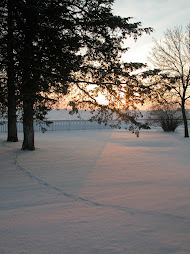At a writer’s forum this past weekend, I spied a newly-published history book written about St. Clair, a town located close to Four Cedars Farms. The elderly author was at the forum, selling her book, and as I flipped through its pages, past block after block of text interspersed with historical photos, I asked her about her effort. The project took three years, she told me; if I had been “from” St. Clair, she added, I would recognize many of the family stories she’d included.
I nodded. Not recognizing me as a local, the author asked me if I was “from” St. Clair.
I was tempted to tell the woman that where we come from has little to do with who we are or where we’re going, but I thought better of it. “I’m from St. Paul, but I live near St. Clair now,” I replied.
“Oh. What brings you to St. Clair?” she asked with surprise, forgetting to ask my name or offer hers, or even shake my hand as a welcoming gesture — a hint that possibly my story might someday find its way into a subsequent edition of community history. I kept flipping pages, stopping only to gaze at the pictures. It’s a habit most writers despise; we believe our words carry more impact than the most striking accompanying picture ever could.
“I’m not sure how to answer that.” It was a lie. She was a lifer from rural Blue Earth County; she wouldn’t understand how stop-and-go daily commutes, airplane noise and nosy neighbors chip away at a city dweller’s enthusiasm for the commonly regarded perks of urban life — the parks, the good schools, proximity to culture. Furthermore, I suspect that my answer would have employed the term “escape,” which would only serve to raise her suspicion of me.
One year of country living has taught me most locals are quite suspicious of people like me – city bred people, interlopers who hadn’t inherited rural land so they had to buy their way in, or out depending on your perspective. Furthermore, I wasn’t interested in describing for her the interior changes that occur whenever my car leaves the pavement and rolls over the gravel drive as I approach the farmhouse. How could she, one who’s never traversed a Twin City freeway during rush hour, understand that even if you place on high price on serenity, many among us are still willing to pony up? Sales are driven by emotion, after all; city people understand this.
“I like the sunsets,” I finally said.
Her blank stare communicated more than her 250-page book ever could.
I asked her what the book cost.
“Thirty dollars,” she said.
It sounded to me like a big city price so I set the book down and walked away.
 Three deer killed and counting is the report from Michigan's "renegade" peninsula.
Three deer killed and counting is the report from Michigan's "renegade" peninsula.




